Domesticated in Peru millennia ago, Maca was an essential crop for use in the alimentation of ancient Peruvians. Its affects on the body were numerous. It raised energy levels – Inca warriors would consume it before battles and messengers would consume it to be able to run up and down mountains day after day, old people who consumed it would work in the fields as if they were young. It would ward-off disease, increase fertility and could even be used to treat depression. It is also now proven as a cure for osteoporosis.
Category: "Life"
Klaus Koschmieder – New Chachapoyan Discoveries
German archaeologist Klaus Koschmieder has spent three years exploring and investigating an area rich in long lost archaeological remains of the Chachapoyas culture. Despite his amazing success in discovering previously unknown cliff face sarcophagi on an ever-reducing budget, his project may come to an abrupt end thanks to Peru’s bureaucratic and incompetent Instituto Nacional de Cultura (INC).
PromPeru: Living the Legend
The new promotional video from PromPeru; some say it’s wonderful, others that it’s a little bizarre.
What do you think?
When the U.S. sneezes, Peru drinks tea. [Featured]
They say that “when the U.S. sneezes the rest of the world catches a cold.”
Well it seems Peru was prepared to avoid a cold.
Victims of the Boom
As property prices and rents sky-rocket, and Peru’s economy enjoys its best rates of growth ever, some are left behind. Not able to pay more for rent and with nowhere else to go, this family has found themselves out on the street, evicted by the property owner who wants to cash in and sell the building that was once the family’s home for new construction.
Maranga and the Lima Culture
In the heart of Pre-Columbian Lima, at the time of the arrival of the Spanish, a vast city was found south of the Rimac River between modern day Lima and Callao. Certainly the administrative centre of power in northern part of the Inca province of Ischma, with Pachacamac an important centre of the south, this city was built long before by the native “Lima Culture” who lived here. Today most of this important complex has been destroyed through the efforts of the Peruvian Government, the University of San Marcos and the Peruvian people in the earlier part of the last century – a time when Peruvians couldn’t care less about their ancient past. Remaining though, and some now finally being restored, are several large huacas, pyramidal mounds, that bare testament to Lima’s long history.
Chuschi’s new legacy
The district of Chuschi in Ayacucho doesn’t want to be remembered as the location from which the Shining Path began is blood-thirsty armed struggle in the 1980s. Today its population are trying to build a new legacy, a program of social development that allows them to work and benefit from their own natural resources. The program, financed by Oxfam, has shown them everything from how to distribute spaces within their homes to techniques for water use, irrigation and cultivation.
Peru’s Amazonian Indigenous
In Peru’s vast Amazon region there are 65 ethnic groups with their own distinct traditions and languages passed down orally from generation to generation. What does the future hold for these peoples?
Selling off the Amazon and its people
It is a story repeated throughout modern human history – people living sustainable lifestyles on land rich in resources, who are not forced to work on extracting them for a pittance and are not contributing to the economy in the way the wealthy would like… have no value. They must change in the name of progress. They must move into shanty towns, work dangerous jobs until the resources are gone and they must spend the rest of their time consuming alcohol. This is the story of Brazil’s Amazonian progress, and it’s a “success story” that Peruvian President Alan Garcia wanted to repeat in Peru.
Polvos Rosados Raid
I wrote some time ago about DVD piracy in Peru, and why its not all that wrong. Unfortunately, the United States, itself pressured by Holywood, puts considerable pressure on poor countries to use policing resources that are probably best used elsewhere to catch the evil pirates.
Not long ago I took these photos of an attempted police raid on the Polvos Rosados market. In the end nothing happened due to the resistance of the stall holders who blocked the door and were throwing small objects.
Machu Picchu is Mexican? Hollywood thinks so.
Walt Disney’s Beverly Hills Chihuahua (trailer) will perhaps re-educate the next US generation to enlighten them of this fact that has been carefully researched by Hollywood writers.
Bosque de Pomac pyramid in danger
On the banks of the Rio Leche is the Pomac Forest, ancestral home of the Sicán civilisation and builders of tens of truncated pyramids throughout the valley, many of which were brought to the attention of the world by Japanese archaeologist Izumi Shimada.
It is he again that brings to the world the news that one of the 3,000 year old structures is being systematically destroyed by people invading the protected area and planting crops on the pyramid itself.



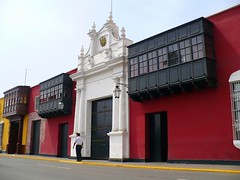
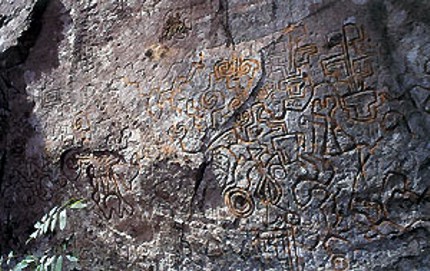

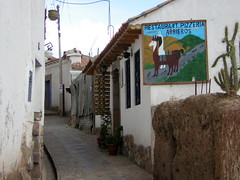
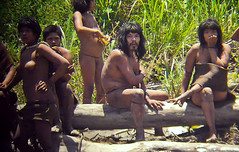
![8 Reasons Why Lima is More Than a Layover [Featured]](http://farm4.static.flickr.com/3070/3050546151_d624cbd4ef_m.jpg)
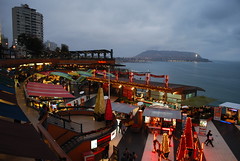
![Lima’s sewage pollutes the ocean [Featured]](http://sp8.fotolog.com/photo/8/40/95/chriztian_bhare/1213163180876_f.jpg)